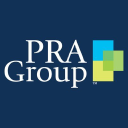/ factorpad.com / stocks / f74cxt.html
An ad-free and cookie-free website.
Our quantitative data points are meant to provide a high-level understanding of factors in equity risk models for Pra Group Inc. Portfolio managers use these models to forecast risk, optimize portfolios and review performance.
We show how PRAA stock compares to 2,000+ US-based stocks, and to peers in the Administrative and Support and Waste Management and Remediation Services sector and Collection Agencies industry.
Please do not consider this data as investment advice. Data is downloaded from sources we deem reliable, but errors may occur.
 As a global leader in acquiring and collecting nonperforming loans, PRA Group, Inc. returns capital to banks and other creditors to help expand financial services for consumers in the Americas and Europe. With thousands of employees worldwide, PRA Group, Inc. companies collaborate with customers to help them resolve their debt.
As a global leader in acquiring and collecting nonperforming loans, PRA Group, Inc. returns capital to banks and other creditors to help expand financial services for consumers in the Americas and Europe. With thousands of employees worldwide, PRA Group, Inc. companies collaborate with customers to help them resolve their debt.
Many of the following risk metrics are standardized and transformed into quantitative factors in institutional-level risk models.
Rankings below represent percentiles from 1 to 100, with 1 being the lowest rating of risk.
Stocks with higher beta exhibit higher sensitivity to the ups and downs in the market. (↑↑)
Stocks with higher market capitalization often have lower risk. (↑↓)
Higher average daily dollar volume over the past 30 days implies lower liquidity risk. (↑↓)
Higher price momentum stocks, aka recent winners, equate to lower risk for many investors. (↑↓)
Style risk factors often include measures of profitability and payout levels.
Companies with higher earnings generally provide lower risk. (↑↓)
Companies with higher dividend yields, if sustaintable, are perceived to have lower risk. (↑↓)
/ factorpad.com / stocks / f74cxt.html
A newly-updated free resource. Connect and refer a friend today.